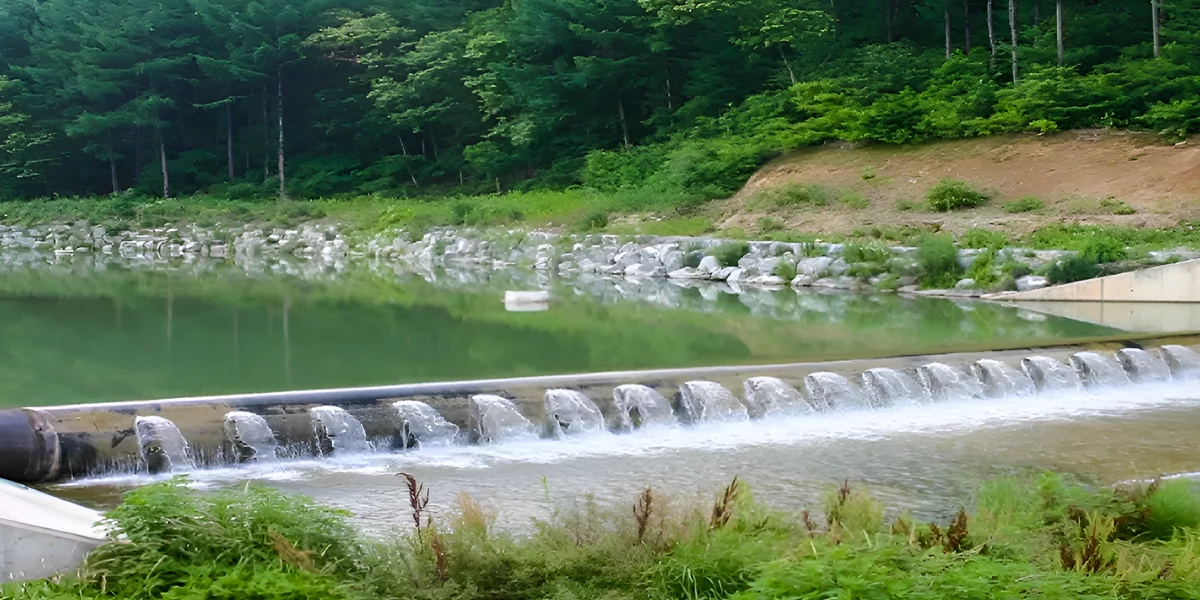

The well-being of rivers supports all living beings, human settlements, farming and the regional economy. At the same time, these important natural resources for the planet are repeatedly threatened by climate change, droughts and flooding that can come without notice. River dams made out of rubber are considered an innovative method to meet river-based challenges by offering flexibility, efficiency and a proper response to the environment. Yooil Envirotech stands at the head of the revolution, providing top solutions for handling water.
How much does the installation of rubber dams really affect the environment along rivers? Is hydropower considered a lasting alternative for traditional dams? We can explore why rubber dams are used in rivers, what they achieve and the effects they have on nature.
A rubber dam in a river is a strong fabric barrier made of rubberized material and can be placed across a river or canal. Dams contain air or water so they can be either raised or lowered according to the environmental conditions and water supply.
The purpose of a rubber dam in a river can be multifaceted:
Because of these functions, we should consider how these systems impact the environment.
Conventional concrete dams are likely to disrupt the river environment by causing problems for aquatic animals, separating their habitats and changing the movement of sediment. Unlike hydropower plants, rubber dams in rivers are designed to be put in place and removed flexibly.
Rubber dam for flood control in rivers offers a smart and responsive solution. Unlike rigid concrete barriers, rubber dams can be dynamically adjusted in real-time, enabling cities and rural areas to manage floodwaters effectively without extensive infrastructure.
Rubber dams help maintain minimum flow levels in rivers during dry spells, preserving the health of aquatic ecosystems and ensuring water availability for wildlife and local communities.
While rubber dams offer many advantages, no solution is without its trade-offs. Certain environmental considerations must be taken into account:
Even temporary barriers like rubber dams can affect the migratory patterns of fish and aquatic fauna. However, Yooil Envirotech incorporates smart dam designs with integrated fish ladders or scheduling deflation periods to enable unhindered passage during critical seasons.
If not monitored, prolonged impoundment of water could lead to stagnation, promoting algae blooms and lowering oxygen levels. Yooil Envirotech addresses this by implementing automated control systems that manage water levels based on flow data and environmental sensors, ensuring regular flushing and oxygenation.
Though rubber dams help trap useful sediment upstream, this could impact downstream morphology. To counter this, Yooil’s advanced rubber dam systems include periodic sediment flushing protocols to mimic natural sediment movement.
With decades of innovation, Yooil Envirotech has pioneered the use of rubber dam technology for rivers in diverse geographical and climatic conditions across the globe. Our projects focus on:
Our mission is to ensure that rubber dam in river systems not only fulfill engineering purposes but also uphold ecological integrity.
One of Yooil Envirotech’s flagship projects involved installing a series of rubber dams across flood-prone river zones in Southeast Asia. These dams:
Post-installation studies showed a 40% increase in fish populations and a 60% reduction in seasonal crop loss due to flooding.
The environmental impact of installing rubber dams in river systems is largely positive when implemented with care, precision, and ecological foresight. By integrating technology with sustainability, rubber dam technology for rivers offers a balanced path forward in managing water resources, mitigating flood risks, and preserving ecosystems.
At Yooil Envirotech, we believe in creating solutions that serve people and the planet. Our innovative rubber dam systems are designed not just to manage rivers, but to respect them.
Interested in learning how Yooil Envirotech can transform your water management strategy with rubber dam technology?
Contact us today for a personalized consultation.
